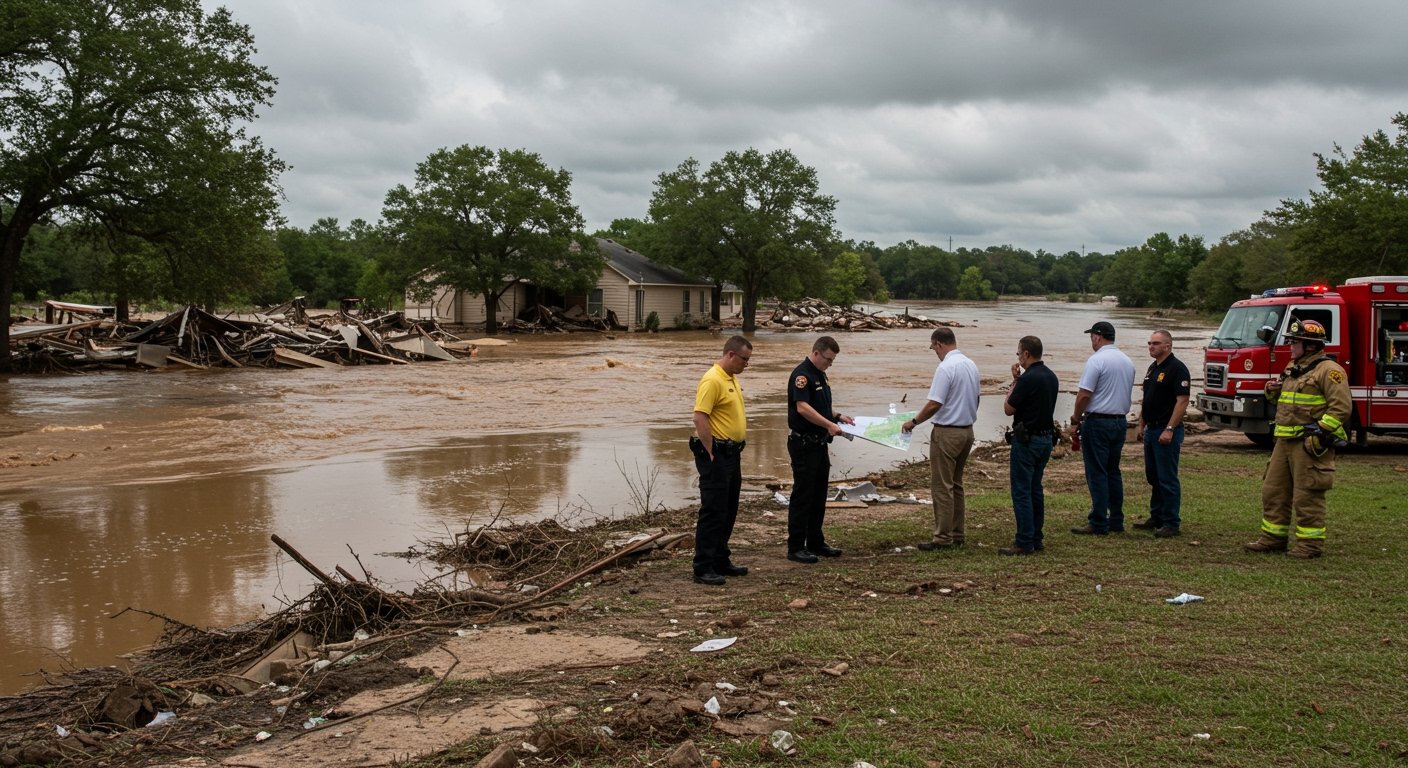Editorial Reflection on Central Texas Devastation
A recent editorial reflects upon the profound tragedy and devastation wrought by the recent Central Texas floods. The natural disaster, which overwhelmed communities with its destructive power, has left a deep scar, marked by grief and loss.
The editorial board, in its poignant reflection, specifically addresses the heartbreaking loss of children at Camp Mystic. This particular aspect of the tragedy underscores the devastating human cost of the floods and serves as a focal point for the broader questions the editorial raises.
Questions Surround Warning Systems
Central to the editorial’s examination is a critical inquiry into the preparedness and response systems in place during the flood event. The editorial board expresses profound grief over the losses and poses crucial questions regarding the circumstances surrounding the disaster.
Foremost among these questions is why flood victims were not warned earlier. The speed and intensity of flash floods in regions like Central Texas necessitate timely and effective warning systems. The editorial board’s questioning highlights a potential gap in the chain of communication or preparedness that may have contributed to the scale of the human tragedy.
Understanding the timeline of events, the dissemination of information, and the protocols followed before and during the flood becomes paramount when reflecting on this question. The editorial implicitly calls for a thorough review of how warnings are generated, communicated, and received by residents and institutions in vulnerable areas.
A Call for Future Prevention
Beyond the immediate aftermath and the critical look at warning systems, the editorial board also casts its gaze towards the future, raising a second vital question: what measures can be implemented to prevent such tragedies in the future? This shifts the focus from retrospective analysis to proactive planning and preparedness.
Preventing future flood tragedies in Central Texas, or mitigating their impact, could involve a multifaceted approach. The editorial’s call for measures suggests a need to explore various avenues, potentially including enhancements to infrastructure, improvements in land use planning in flood-prone areas, advancements in hydrological monitoring and forecasting, and strengthening community-level emergency response plans.
The specific mention of the loss at Camp Mystic serves as a stark reminder of the particular vulnerabilities faced by certain populations or locations during such events. Any future prevention measures would need to consider the diverse range of potential victims and scenarios.
The editorial board’s question serves as an impetus for policymakers, emergency management agencies, community leaders, and residents to collaboratively assess current strategies and identify robust solutions aimed at building greater resilience against future flooding events. It implies a recognition that while floods are natural phenomena, their impact on human life and property can potentially be reduced through effective planning and preventative action.
The Editorial Board’s Perspective
The editorial, as a reflection of the publication’s stance, conveys not only grief but also a clear demand for accountability and improvement. By raising these specific questions – concerning the timing of warnings and the implementation of preventative measures – the editorial board positions itself as a voice advocating for the safety and preparedness of the Central Texas community.
Their expression of grief underscores the human element at the core of the disaster, ensuring that the focus remains on the lives affected, particularly the tragic loss of children at Camp Mystic. The critical questions posed are a direct response to this grief, channeling sorrow into a constructive call for examination and action.
Conclusion: Seeking Answers and Action
The Central Texas floods represent a devastating chapter, marked by unforeseen destruction and heartbreaking loss. The editorial board’s reflection, emphasizing the failure of early warnings and the pressing need for future prevention measures, resonates deeply within the affected communities.
The questions raised are not merely rhetorical; they are a call to action for authorities and stakeholders to thoroughly investigate the circumstances of the recent tragedy and to commit to implementing concrete strategies that will enhance safety and preparedness for all residents in flood-vulnerable areas. The memory of those lost, particularly the children at Camp Mystic, serves as a solemn reminder of the importance of finding clear answers and enacting effective preventative measures to avoid repeating the pain of this devastating event.






